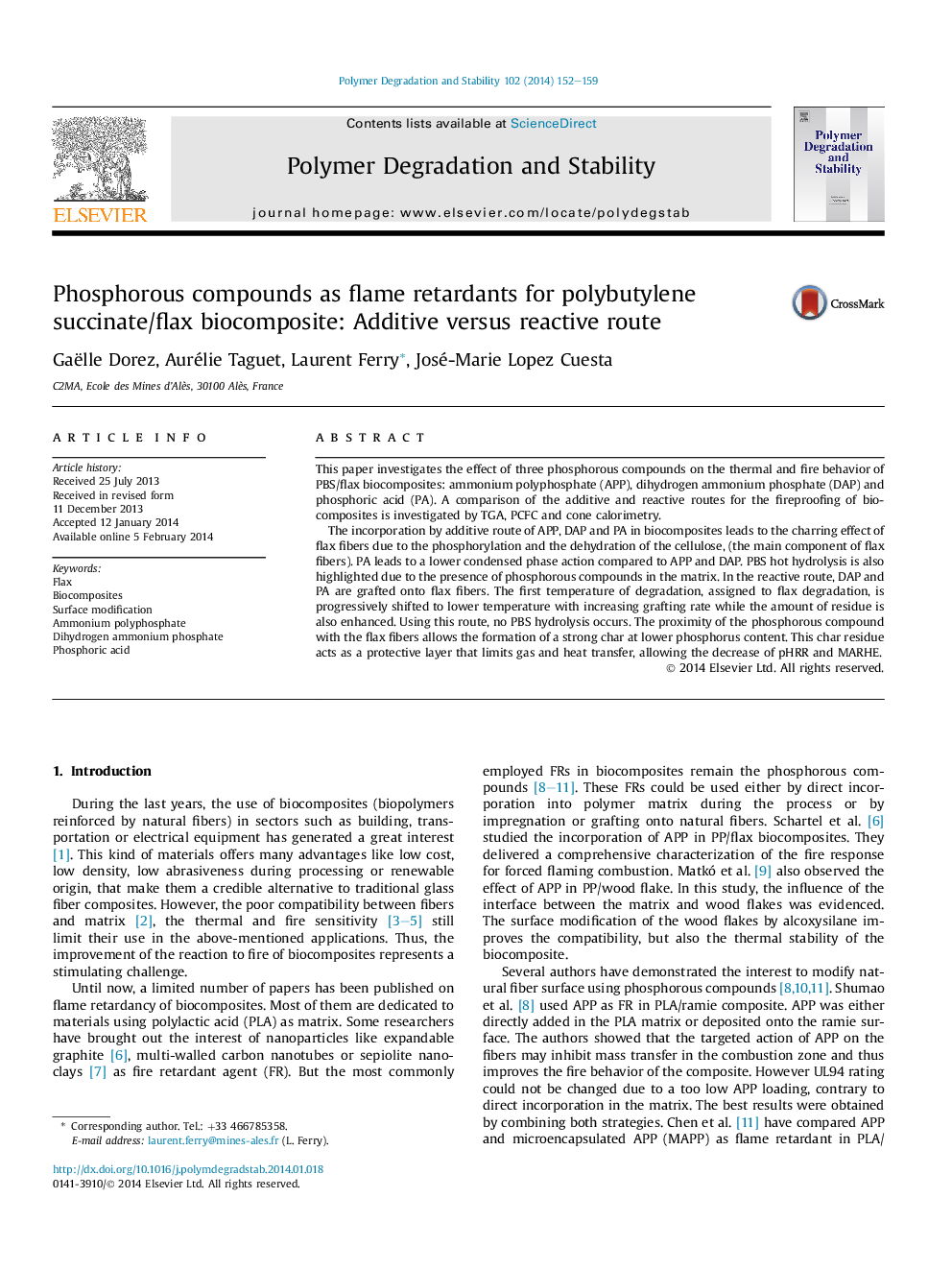| کد مقاله | کد نشریه | سال انتشار | مقاله انگلیسی | نسخه تمام متن |
|---|---|---|---|---|
| 5201976 | 1502911 | 2014 | 8 صفحه PDF | دانلود رایگان |
This paper investigates the effect of three phosphorous compounds on the thermal and fire behavior of PBS/flax biocomposites: ammonium polyphosphate (APP), dihydrogen ammonium phosphate (DAP) and phosphoric acid (PA). A comparison of the additive and reactive routes for the fireproofing of biocomposites is investigated by TGA, PCFC and cone calorimetry.The incorporation by additive route of APP, DAP and PA in biocomposites leads to the charring effect of flax fibers due to the phosphorylation and the dehydration of the cellulose, (the main component of flax fibers). PA leads to a lower condensed phase action compared to APP and DAP. PBS hot hydrolysis is also highlighted due to the presence of phosphorous compounds in the matrix. In the reactive route, DAP and PA are grafted onto flax fibers. The first temperature of degradation, assigned to flax degradation, is progressively shifted to lower temperature with increasing grafting rate while the amount of residue is also enhanced. Using this route, no PBS hydrolysis occurs. The proximity of the phosphorous compound with the flax fibers allows the formation of a strong char at lower phosphorus content. This char residue acts as a protective layer that limits gas and heat transfer, allowing the decrease of pHRR and MARHE.
Journal: Polymer Degradation and Stability - Volume 102, April 2014, Pages 152-159
